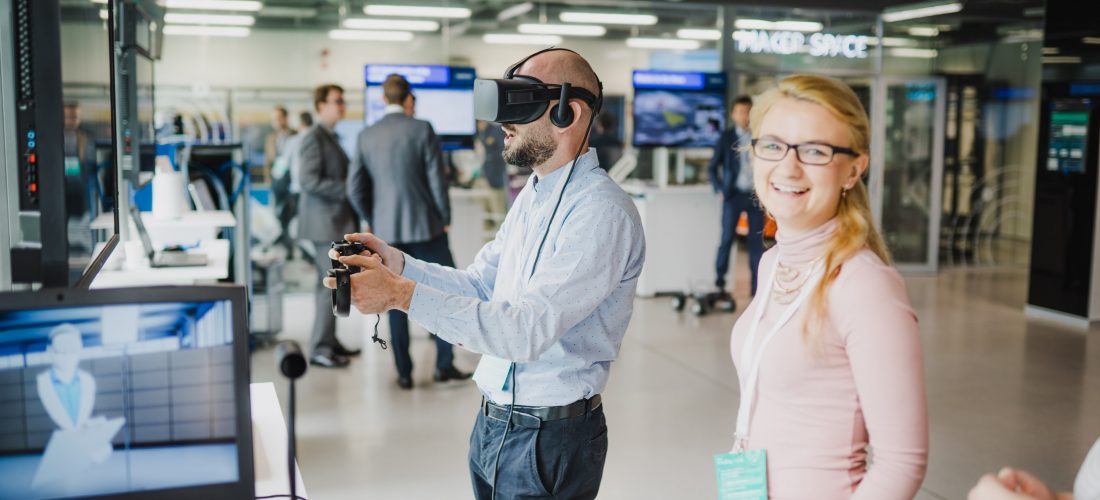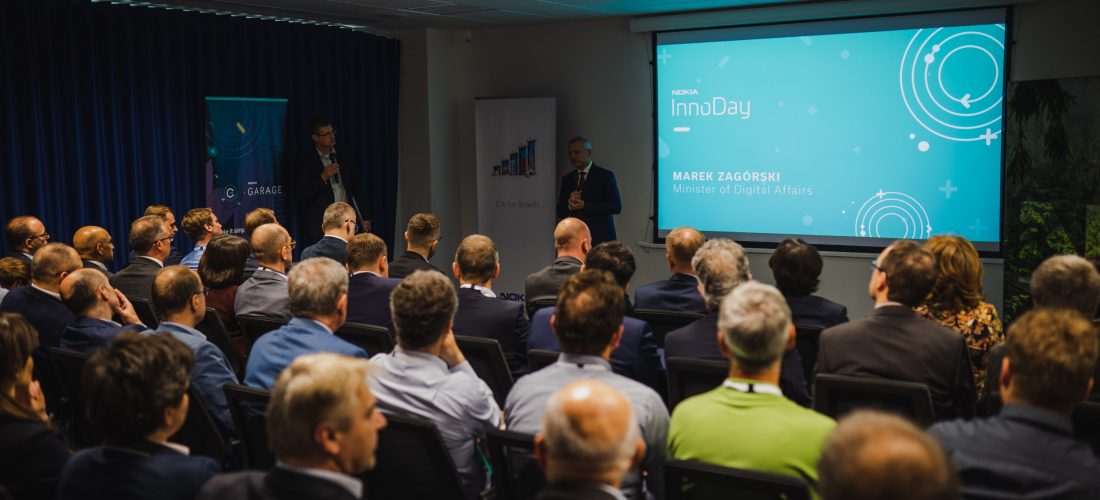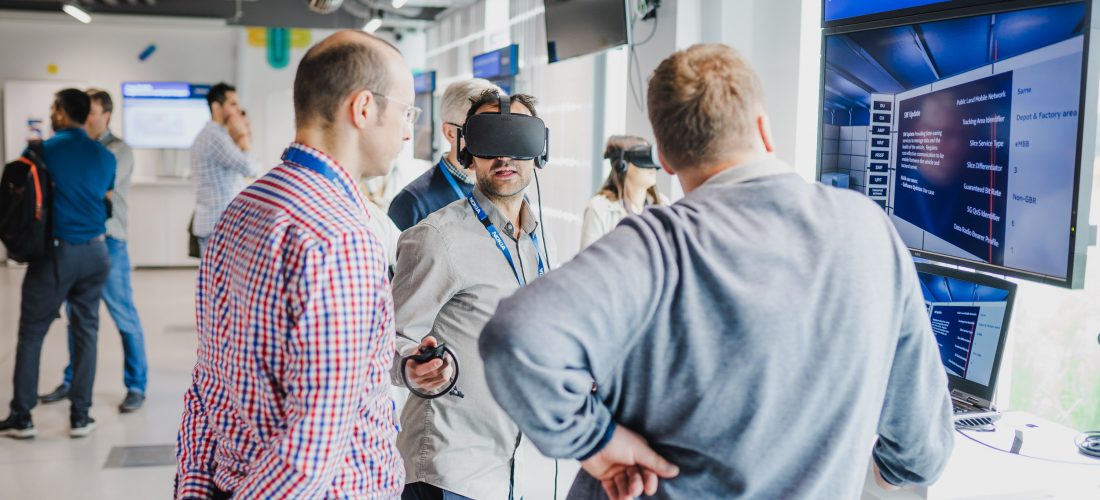Nokia InnoDay, organized by Nokia R&D Center Wroclaw, was a third edition of one of the most resounding events in Polish ICT community. This year its leading motif was the development of LTE and 5G networks, making our cities smarter and more resident-friendly. Nokia InnoDay is a kind of ‘platform’ presenting the work and achievements of Nokia engineers to entrepreneurs, mobile operators, academics, public authorities and media; and enabling dialogue on the evolution of new technologies.
’Each year in Barcelona the Mobile World Congress (MWC) is held, the largest ICT event in the world. Our Wroclaw Nokia Center organizes a local “mini Barcelona” every year as well, where we present the technological novelties developed by Wroclaw engineers. This year’s edition focused mostly on the LTE and 5G technologies, opening the gates for Industry 4.0, Smart Cities or autonomous transport,’ says Konrad Fuławka, Nokia Garage Wroclaw Innovation Officer.
As one of the largest R&D centers in Poland, Wroclaw Nokia has long played a key role in developing a friendly ecosystem supporting technological innovation. The capital of Lower Silesia is now considered a major Polish ICT hub, and the leader in the Smart City category, according to the words of one of the guests to the conference, Wroclaw Mayor, Jacek Sutryk. Full vision of Wroclaw as a Smart City was presented by the Deputy Mayor, Jakub Mazur.
Later, Suprano Banerjee, Global Public Sector Lead Nokia, presented the overall vision of a Smart City in Poland, where the network should include not only the household appliances, but also means of transport or city infrastructure, such as CCTV monitoring or even dustbins, signaling overflow of garbage. The key in this case are new applications requiring low-latency and high-reliability communication, enabled by the upcoming 5G technology.
A much wider image of the development road map, covering not only Wroclaw, but the entire Polish telecommunication sector, was demonstrated by Minister of Digital Affairs, Marek Zagórski, who focused mainly on the plans of development of the 5G network in our country. The plans provide for allocation of four blocks of 50 MHz width from the 3.7 GHz frequency band among the mobile network operators. Additionally, also the 26 GHz frequency band may be made available. This means that by 2020 at least one large Polish city will be fully prepared for 5G, and five years later the technology will be available for the residents of all larger Polish agglomerations. The Digital Affairs Minister enlisted also some facilitations offered to telecoms by Polish government, such as support with the transmitter construction, relevant legislation or reduction of payment for the BTS stations located on the road lanes.
Industry 4.0 according to UKE
The number of mobile devices grows rapidly year by year, which means a significant increase in the data transferred. This tendency literally imposes constant improvement of the connection effectiveness, including the wire connections, said Marcin Cichy, President of the Office of Electronic Communication (UKE). According to UKE we have now 19.2K km of railway routes, 420.2K km of roads, 722.4K km of the power lines and 453.8K km of optical fibers in Poland. Last year as many as 3,000 PB were transferred via domestic mobile networks. This year the figure is expected to grow by 25%. The numbers show how the so-called Industry 4.0 imposes rapid implementation of the higher capacity networks, such as 5G.
5G, or what is the ‘fifth level?’
Let us start by saying that the currently common LTE (4G) technology enables 300Mbps internet access. 5G multiplies this value even up to 100 Gbps. The technologies used in 5G systems will include both the existing or still developed standards, such as 2G, 3G, LTE or Wi-Fi, and completely new ones, based e.g. on different radio interfaces and adapted to new, higher-frequency bands (ca. 4GHz, 10GHz, 30 or even 70-90GHz, while currently most of the communication is done below 3GHz).
‘Currently the signal latency is dozens of milliseconds, while in case of 5G it will be close to zero – even now we are able to reach 2 milliseconds! To make it clear, please imagine a car running at a speed of 120 kph. Let’s also assume that the car is constantly communicating with the network. For LTE technology, during the time between sending a signal to receiving a response, the car will move by 2.6 meters. For 5G technology the distance will be only 6 centimeters! For the designers of autonomous vehicles this difference is crucial and may be critical for human life,’ explains Konrad Fuławka.
New scenarios for application of the wireless communication
LTE and 5G networks may be applied both in automotive sector and in space travel. An example of such application was a presentation of a Martian rover which can communicate with Earth via LTE technology. The prototype presented during Nokia InnoDay was created by Nokia Cracow engineers. It shows that telecommunication is currently a key factor of development in literally all areas of our lives.
Leslie Shannon, Head of Ecosystem and Trend Scouting – Nokia, stressed in her presentation that modern technology will shape the ITC trends in the near future. One example, taken from the science fiction movies, may be the AI combined with the speech synthesizer, which analyzes the sounds and movements of a dog, and then ‘translates’ the animal’s message into some human language. What is interesting, some research works are being conducted, assuming the reverse communication, between a human and a dog!
There were many similar futuristic scenarios presented during this year’s Nokia InnoDay. Apart from the animal-human communicator, the most interesting of them included a mirror measuring blood pressure or a watch detecting earthquakes.
’There are countless examples showing implementation of the Internet of Things in our everyday life. A year ago we were talking about autonomous fridges and today we want to use AI to communicate with dogs,’ laughs Konrad Fuławka.
Similarly to previous years, the participants of the conference could see the state-of-the-art solutions and technological prototypes developed by Nokia and its partners, mostly presenting new 5G and LTE possibilities with respect to ultra-high-speed data transmission (e.g. 4Gbps LTE), Internet of Things and new Smart City solutions.







